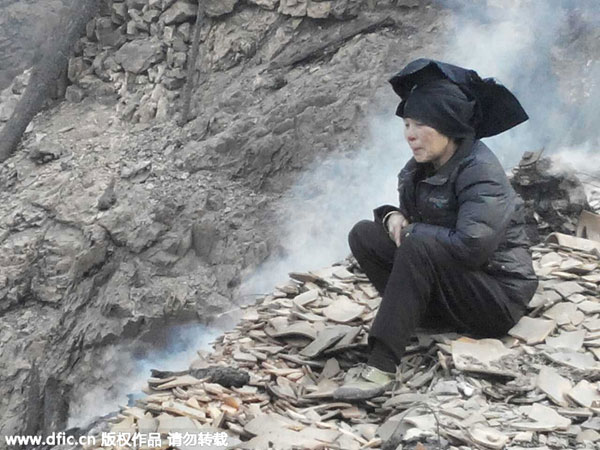 |
|
A woman sits on the remains of a house destroyed by a fire in an ethnic village in Jianhe county, Southwest China's Guizhou province, on Dec 13. More than 60 properties were engulfed by the blaze, affecting 619 residents, but no casualties have been reported. Jiuji village, one of the biggest and best preserved villages of the Miao ethnic minority, was selected by China as a UNESCO World Heritage site nominee in 2006. [Photo/IC]
|
Current situation and efforts
Luo Deyin, a Tsinghua University professor of architecture and a long-time researcher in traditional villages, describes the current situation of China’s traditional villages as "seriously damaged but with a large amount remaining."
His view echoed that of He Wei, an architect and professor with the Central Academy of Fine Arts. He pointed out that China has a huge number of traditional villages, especially in South China. "The number is too big that local people and governments tend not to make a fuss over a discarded village," He said. "What's more, protecting a village does not bring any person or party instant benefit, so nobody does it."
To save the endangered villages, the central government launched a special task force in 2012 to investigate which villages needed protection. The special project initially involved four departments: the Ministry of Housing and Urban-Rural Development, Ministry of Culture, the State Administration of Cultural Heritage and Ministry of Finance. The line-up later became larger, as the Ministry of Agriculture, Ministry of Land and Resource and the China National Tourism Administration joined forces.

